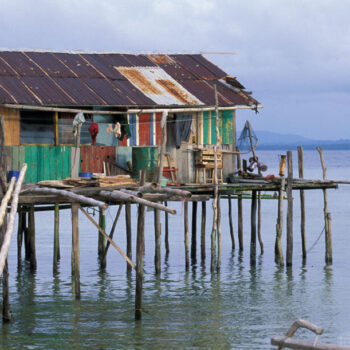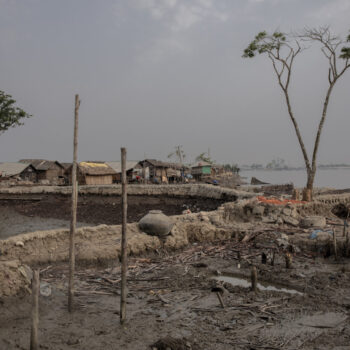Building bridges was the main topic for the LEDS LAC forum and it was particularly relevant to ensure mainstreaming of climate change actions in our economies to achieve the low carbon development transformation we need. It highlighted the need to break silos, integrate agendas across sectors, levels of government, and actors.
Challenges remain when trying to separate mitigation and adaptation when many of the solutions are a combination of both. Interesting examples where given in the case of Chile’s agricultural sector, with irrigation techniques and energy efficiency measures deployed in vineyards.
Building bridges also means better integrating co-benefits for decision making processes. Mexico’s National Institute of Ecology and Climate Change (INECC) presented a very practical tool for modelling medium and long term impacts of proposed and future energy and fiscal policy combining macroeconomic modelling (top-down) and a technical modelling of energy consumption (bottom-up). This type of tool is very relevant to asses and to communicate LEDS benefits at a national level between different ministries and can potentially help countries in taking further actions for implementing their Paris commitments (INDCs).
Developing institutional arrangements to facilitate collaboration and integration of different actors and agendas remains one of the critical challenges. Countries like the Dominican Republic are taking action through a Climate Change Committee that integrates different ministries with the participation of the private and civil society sectors. Further work remains to be done throughout the Latin American region to ensure these institutional arrangements are effective in countries where they exist and are set up to be effective in others.
Improving collaboration between private and public sector will require work though steps are being taken to advance further. In 2011 Colombia set up the Climate Finance Committee of climate change System (SISCLIMA). Multiple departments of the Ministry of Planning DNP have engaged with this committee and are now actively examining the country’s infrastructure challenges and searching for low carbon financing schemes to address them. As a result of a joint effort between the private and public sectors Colombia is planning to develop tailored financial mechanisms with pilot projects in 2018 for the larger green house gas emitting sectors. That brings me to a central point of the discussions in both LEDS LAC and LEDS GP…
Finance
Finance was clearly a priority for most of the participants who wanted to better understand and improve collaboration between private and public sectors in order to implement their INDCs and leverage private capital. This was reflected on the agenda that in comparison to previous LEDS annual events had more sessions to address this. LEDS GP had 4 training sessions on finance and both had plenaries bringing experts from multilateral development banks, the Green Climate Fund and Climate Investment Funds as well as consultancies and think tanks. I had the pleasure of moderating one of the sessions on financing instruments which showed examples of instruments such as green bonds, performance based payments and smart funds. From the discussions it was clear that for financing instruments to be effective they have to be adapted to the national context and financing ecosystem of a country. This includes assessing the market participants, barriers, gaps and policies to understand the enabling environment of the individual country.
There is a better understanding of the different types of financing actors and types of risks that different instruments try to overcome to increase participation of private actors and financing flows for low carbon and resilient projects. However it was clear from the discussions that improvements are needed in:
- Synergies/collaboration and dialogue from public and private sectors,
- Understanding finance from public sector actors to be able to identify transformational projects, particularly in the context of the GCF,
- Understanding/training for commercial finance actors on the opportunities low carbon projects represent, and more innovation for financing adaptation.
There are some very interesting and successful examples such as the ECOCASA project in Mexico for housing energy efficiency and renewable energy which is already being replicated in Argentina. Other examples show how “blended finance” can be used to leverage capital and the crucial role that national development banks have in financing the low carbon transition.
Coming out of Punta Cana it is evident that finance will remain an important component for implementing the international and national climate change commitments. Financing INDCs will be a priority for implementing the Paris agreement next year. INDCs need to be converted into investment plans where financing strategies will be required. Countries around the world like Chile and Mexico are taking steps towards this aim. The LEDS partnership will be looking to provide support towards these aims in selected countries, to share learning globally, and help INDCs translate into action on the ground.


